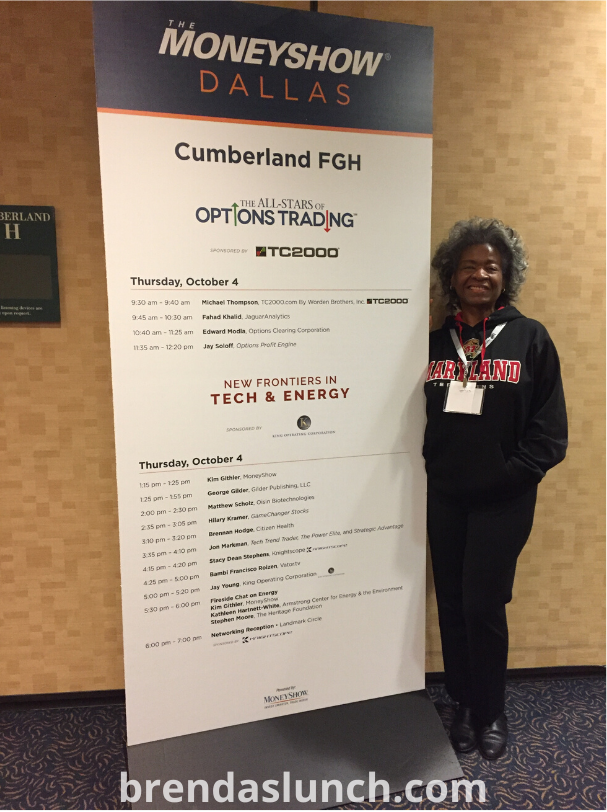
The MoneyShow
Brenda has a friend she’s known for 30 years. He sells financial products for a multi-level marketing company. About a year after the Great Recession of 2008, Brenda’s “friend” invited her to a free luncheon and financial presentation. After the luncheon and financial presentation, Brenda and her “friend” caught up on old times. This “friend” also told Brenda about a financial product that could guarantee a stream of income until her death. All Brenda had to do was invest a lump sum of money, wait 10 years, and then start receiving the stream of income. It sounded too good to be true. So, Brenda did her research.
The Total Money Makeover: Classic Edition: A Proven Plan for Financial Fitness
Ask for a Prospectus
She asked her “friend” for a prospectus. A prospectus spells out all of the details and risks of the financial product. Fortunately, the Securities and Exchange Commission (SEC) requires that all institutions prepare a prospectus of all securities offered for sale. When Brenda received the prospectus, she was shocked to discover it was 100 pages long! It took a few weeks of reading to get through all 100 pages. Some of the concepts were so confusing that Brenda had to re-read several pages to make sure she understood the details. Three of the details caused Brenda to question whether this financial product was right for her.
Think and Grow Rich: The Original, an Official Publication of The Napoleon Hill Foundation
Red Flag #1
One “red flag” was the annual fee charged by the company backing the financial product. In order to receive the “guaranteed income stream,” annual fees of 3% would be deducted from Brenda’s investment. Three percent doesn’t sound like much, but when you add it up over a 30 year period of time, it becomes significant!
Investing For Beginners (Introduction to Investing)
Red Flag #2
The 2nd “red flag” for Brenda was that there was no guarantee regarding the amount of income she would receive every month. According to the prospectus, the amount depended on the underlying investments, which were mutual funds. If the mutual funds didn’t perform well over a period of time, then Brenda’s investment would not perform well either. In other words, if Brenda invested $10,000 of her retirement account into the financial product, 3% in annual fees would be deducted off the top every year. Over a 20 year period of time, the annual fees would amount to $6,000! Naturally, we hope the stock market would return more than the 3% per year, but there is no guarantee! A huge concern was that after investing the money and waiting for 10 years, there was no guaranteed minimum amount Brenda would receive. In other words, after investing $10,000 of her hard-earned money, and annual fees of 3% being deducted, and possible lackluster returns of the underlying mutual funds, it’s entirely possible that Brenda would receive a very small return on her investment, or no return at all! Brenda decided to take her chances and keep the money in her retirement account and invest it herself. If the investments she chooses don’t do well, then it’s her fault, and she can live with that. But if she had turned over a huge chunk of her retirement money to a company, and after waiting 10 long years, only received paltry returns, she would have felt like an old fool.
The Intelligent Investor: The Definitive Book on Value Investing. A Book of Practical Counsel (Revised Edition) (Collins Business Essentials)
Red Flag #3
The 3rd “red flag” was the 100 page prospectus. It was probably the most complex document Brenda had ever read. Brenda wondered why the company didn’t try to simplify the concepts presented in the prospectus. Was the subject matter really that complex, or was the company trying to confuse the consumer?
Lessons Learned
- If it sounds too good to be true, it probably is.
- Go with your gut. If your gut instinct tells you something is fishy, something doesn’t feel right, then go with your gut.
- Do your due diligence, in other words, do your research. Google makes it extremely easy to find information on any subject.
- The bottom line is — if you don’t understand a financial product, then don’t buy it!
The Millionaire Next Door: The Surprising Secrets of America’s Wealthy
Have you had any experiences with financial products that sent up red flags? To share your experience, tweet Brenda on Twitter at Brenda’s Lunch, follow Brenda on Instagram at Brenda’s Lunch, pin Brenda on Pinterest at Brenda’s Lunch.
The opinions expressed herein are solely those of the Author/WebMaster. Before taking any action, please consult your real estate, financial, and legal advisors.